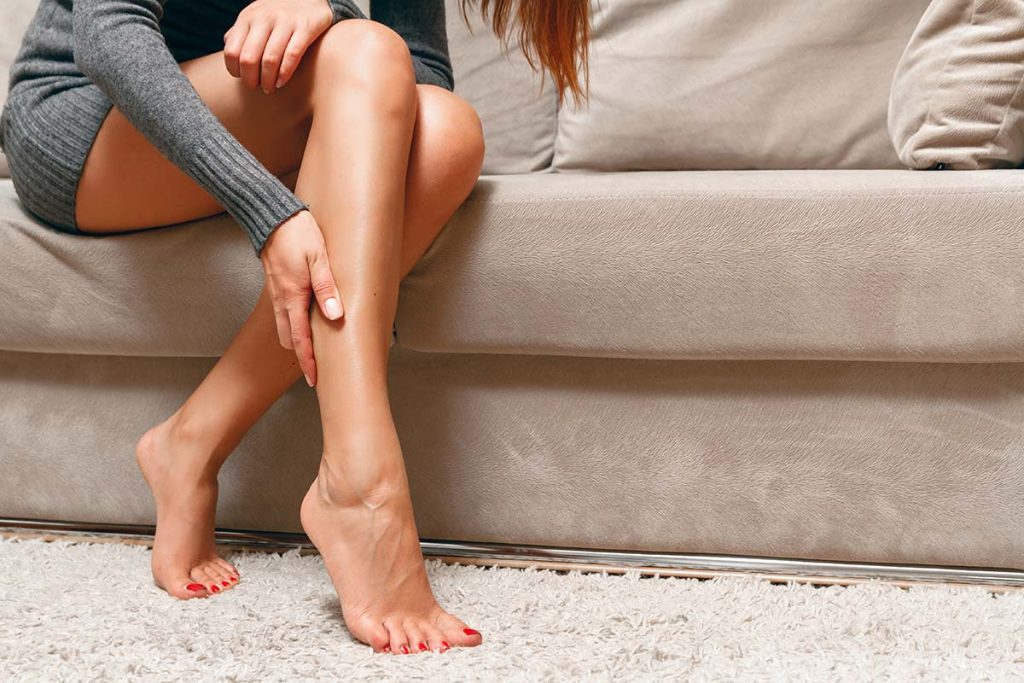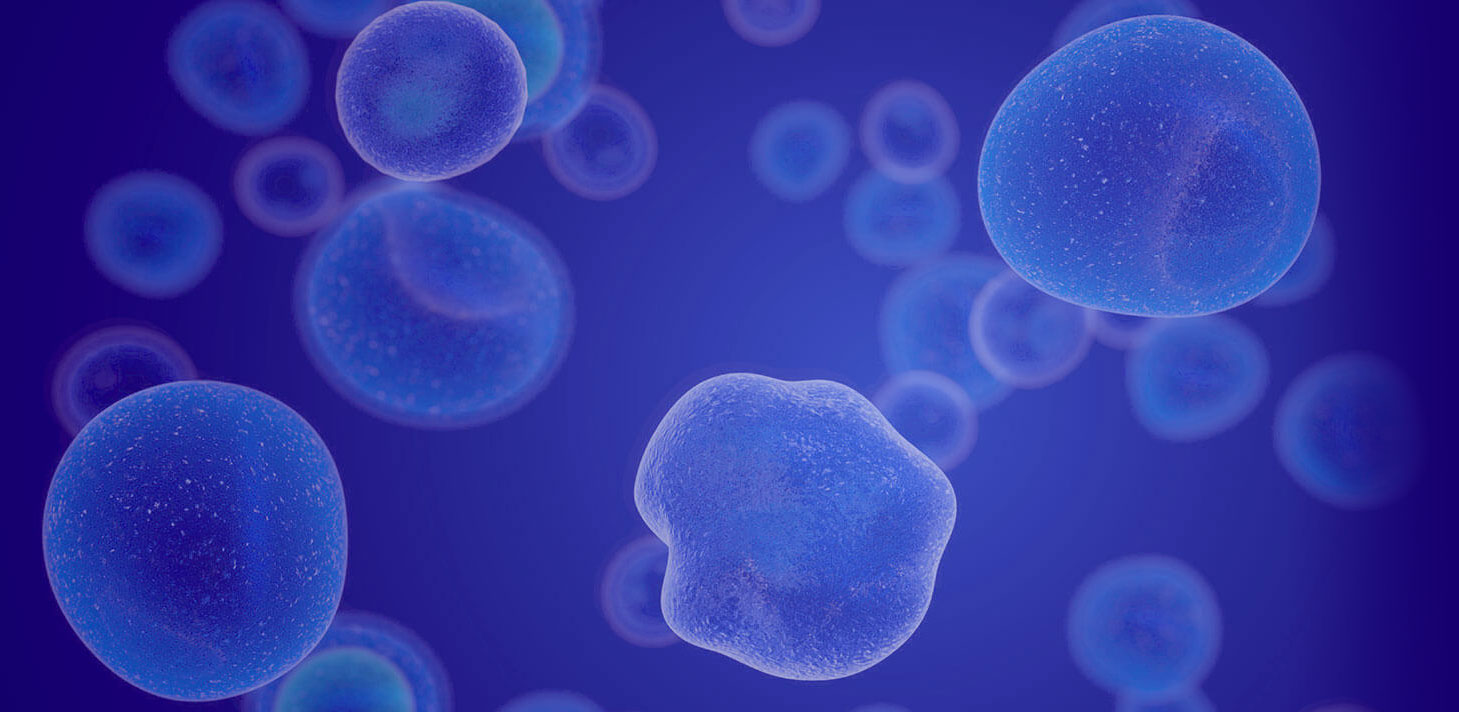Achilles Tendon Injury
Conveniently located to serve the areas of Greenville, SC, Spartanburg, SC, Columbia, SC, Anderson, SC and Asheville, NC

An Achilles tendon injury is a debilitating condition that can severely affect mobility and quality of life. The Achilles tendon, the largest tendon in the body, connects the calf muscles to the heel bone, also called the calcaneus. It plays a crucial role in allowing us to walk, run, jump, and perform various activities that involve movement of the foot and ankle. Unfortunately, this tendon is susceptible to injury and can be prone to issues such as overuse injuries, tears, strains, and other types of inflammation.
If you have recently experienced a tendon injury, you can take charge of your healing and ensure you get optimal care at Daisy Stem Cell Therapy and Advanced Regenerative Medicine Centers of the Carolinas with locations throughout North and South Carolina. While rest is the most important aspect of your recovery, it’s important to seek professional medical attention from a specialized provider like Dr. John Haasis III who has 25 years’ worth of experience helping patients feel like their most capable, healthy selves. Please call to schedule an appointment at one of our 5 locations listed below at (864) 775-5682 or fill out your inquiry with our contact form. A member of our team will gladly book you a consultation with Dr. Haasis at the next available date.
Contents
About the Achilles Tendon
Tendons can exhibit great strength, yet when they are injured, recovery can take much longer than other areas of the body. This is due to the fact that they do not have good vascularization– quality access to blood vessels- that serves to help repair the tissue and reduce inflammation. Tendons are mostly made of collagen with only a small portion of elastin, so they are relatively rigid and not as resilient in movement when compared to other tissues. Although the Achilles tendon can withstand nearly 3500 newtons of force or 787 lbs, it is not immune to injury, especially repetitive injuries. (1) In fact, it is the most commonly injured tendon in the body.
How Stem Cells Can Help
Recent research has shown that stem cells are remarkable and capable of healing many areas of the body, including but not limited to, tendons, ligaments, cartilage, and even bones. Stem cell therapy can serve to facilitate more optimal, long-term healing and relief from both acute and chronic conditions. This area of study is commonly referred to as regenerative medicine since it utilizes components that are already found within our own biology.
At a cellular level, stem cells divide into daughter cells that give rise to more specialized cells. These specialized cells are responsible for the creation of various types of tissue; connective tissues, in particular, are products of mesenchymal stem cells (MSCs). In addition to cellular regeneration and treating the root causes of injury, MSCs support angiogenesis– the formation of new blood vessels that will allow for better transportation of nutrients to the site of injury. With more blood flow within the area, MSCs from stem cell treatment and/or the body’s own mechanisms thrive and proliferate within the injured area. (2)
Achilles Tendon Conditions
Stem cell therapy can properly equip the Achilles tendon to repair itself more efficiently. Dr. Haasis can treat these specific conditions:
- Achilles tendonitis is a general term for inflammation of the tendon, caused by repetitive movements that involve running, jumping, having tight calf muscles, or loss of tendon elasticity. Factors such as being male, overweight, inflexible, and wearing poor-fitting shoes can contribute to your risk of developing this condition. The most common symptoms are pain and stiffness. Implementing stem cell therapy, as well as other treatment protocols like resting, applying ice at frequent intervals, and using a supportive, elastic bandage can provide great relief from this chronic condition.
- Achilles strain injuries occur when the tendon is overstretched abruptly, so it is considered an acute injury. Tiny micro tears result in inflammation, sensitivity, and different degrees of pain, depending on the grade of the strain. Grades 1 and 2 strains are still considered strains, whereas a grade 3 strain is an official tear.
- Achilles tears are partial or full tears that could take months to heal. Whether or not your primary physician recommends surgery, Dr. Haasis can utilize stem cells during the healing process or after surgery, when appropriate. Studies demonstrate that the use of stem cells for the treatment of various strains and tears is more effective than another type of regenerative therapy, platelet-rich plasma, and it reduces the likelihood of re-injury. (3)
- Ankle bursitis doesn’t affect the Achilles itself, and it is often mistaken for a tendon injury. At the base of tendons and where joints meet are tiny sacs filled with fluid called bursae. When functioning normally, they provide the joint or tendon with cushioning, facilitating smooth, pain-free movement. When these sacs become inflamed, it can lead to radiating pain, warmth, and redness. Ankle bursitis can affect the overall health of the Achilles tendon itself since they are directly attached. It is classified as a chronic condition and can be mistaken for Achilles tendonitis.
Benefits of Stem Cell Therapy
Relief from Achilles tendon pain is just one consultation away. These are just some of the benefits you can expect from stem cell therapy with Dr. Haasis:
- Stem cell injections are minimally invasive, requiring only local anesthesia.
- The treatments facilitate faster healing with or without surgery.
- Dr. Haasis retrieves stem cells from a reputable human donor stem cell bank.
- Injections can treat related damage to surrounding muscles, ligaments, and cartilage.
Personal Consultation
During your personal consultation with Dr. Haasis, he will evaluate the extent of your injury and review the symptoms related to your injury. He will review your medical history, your activity level, and type of exercise you engage in, and the steps for recovery that you have taken so far. He will come up with a treatment plan that works best for you, and track your healing process and the improvements you notice along the way.
If you’re ready to implement one of the latest, most advanced treatments available, contact our practices in North and South Carolina by calling (864) 775-5682 or using our contact page.
Candidates
If you have a diagnosable Achilles tendon injury or another painful condition related to your connective tissues and/or joints, you could benefit greatly from stem cell therapy. Although it is a useful aid in the healing process, Dr. Haasis doesn’t recommend it as the sole means of injury treatment. In general, he also recommends resting the injury, applying ice, and possibly undergoing physical therapy in some cases. Dr. Haasis reviews each individual’s needs and finds customized solutions for each.
Procedure Steps
With the Daisy Institute’s form of stem cell treatment, there is no surgical aspiration involved. Unlike other therapies that require a sample of bone marrow from your pelvis, Dr. Haasis uses thoroughly purified and prepared samples from a stem cell bank. They are purified through centrifugation, a process that involves spinning the sample in order to attain separate MSCs from the other tissues. (4) These stem cells are allogeneic, a term that denotes that they come from human donors, so they are compatible with patients’ bodies. Dr. Haasis administers a local anesthetic to the ankle prior to making several injections in the Achilles tendon and its immediate surrounding areas.
Recovery and Results
Many patients describe some discomfort in their calf and/or Achilles tendon for around 2 to 7 days, but as it begins to subside, the healing process will commence. Dr. Haasis may recommend specific over-the-counter medications to help you deal with the temporary soreness, but he advises patients to refrain from taking any anti-inflammatories that can interfere with how well the injections work.
Patients begin to see gradual improvements and a reduction in the pain level over the coming weeks after their therapy. As you begin to feel better, Dr. Haasis may prescribe physical therapy that will improve your range of motion and get you back to the activities you love. Many patients will feel the benefits of one treatment for more than 6 months, with some feeling the effects for several years. Even if the results are not noticeable after a few months, stem cells still work to strengthen the tissue so that it’s less likely that you’ll experience an injury in the future.
Cost of Stem Cell Therapy in South Carolina
The cost of your stem cell therapy will depend on the number of injections you receive in your injured area and whether or not you choose to undergo several sessions. To get the most accurate idea of the cost of your injections, please schedule a consultation appointment with Dr. Haasis. There, he will discuss the details of your condition, what you have tried so far, and what to expect from the therapy.
You can request your appointment online or dial (864) 775-5682 to get in touch with our 5 available locations in the Carolinas- all but one are in South Carolina. We can’t wait to help you along in your journey towards greater physical health.
References
- Freedman BR, Gordon JA, Soslowsky LJ. The Achilles tendon: fundamental properties and mechanisms governing healing. Muscles, ligaments, and tendons journal. 2014;4(2):245-255. https://www.ncbi.nlm.nih.gov/pmc/articles/PMC4187594/
- Vasanthan J, Gurusamy N, Rajasingh S, et al. Role of Human Mesenchymal Stem Cells in Regenerative Therapy. Cells. 2020;10(1):54. doi:https://doi.org/10.3390/cells10010054
- van den Boom NAC, Winters M, Haisma HJ, Moen MH. Efficacy of Stem Cell Therapy for Tendon Disorders: A Systematic Review. Orthopaedic Journal of Sports Medicine. 2020;8(4):2325967120915857. doi:https://doi.org/10.1177/2325967120915857
- Pelekanos RA, Sardesai VS, Futrega K, Lott WB, Kuhn M, Doran MR. Isolation and Expansion of Mesenchymal Stem/Stromal Cells Derived from Human Placenta Tissue. Journal of Visualized Experiments. 2016;(112). doi:https://doi.org/10.3791/54204


